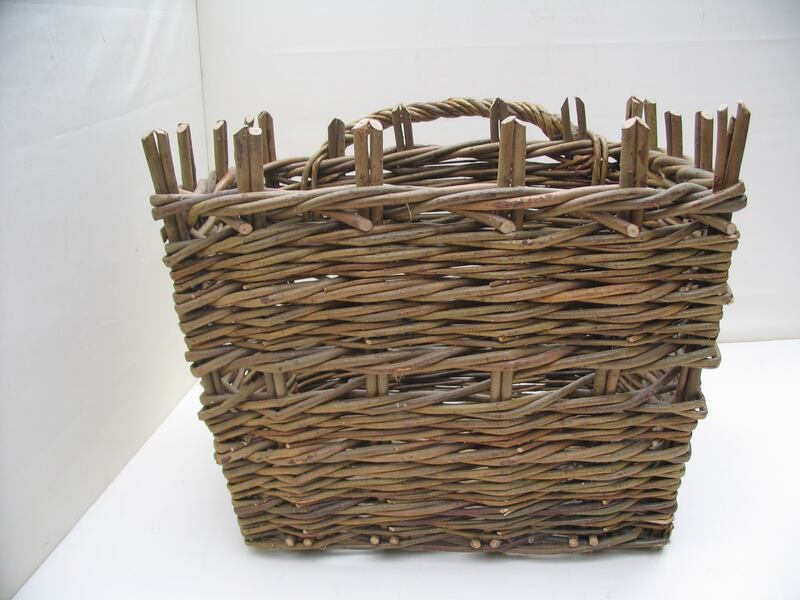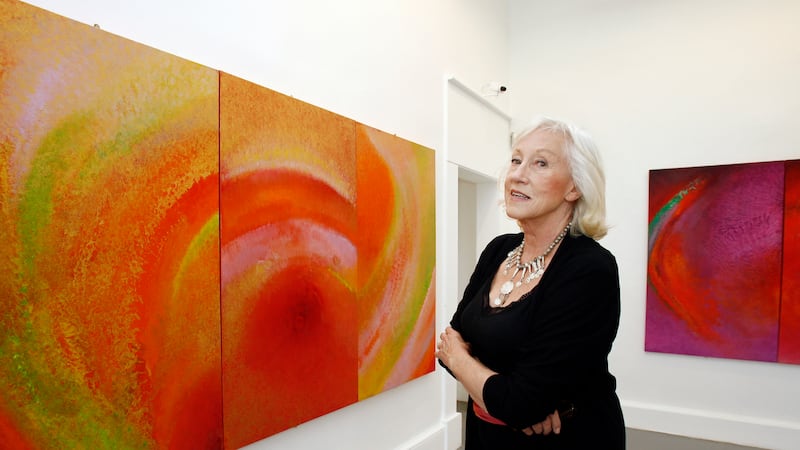An abundance of raw material? Check. A hopefully gorgeous and possibly practical result? Why not. Joe Hogan has been making baskets from his west of Ireland studio since 1978.
Sounds idyllic, isn’t it easier to pick up something in Ikea?
Possibly, but that’s missing the point. Hogan, who has received a Lifetime Achievement Award from President Michael D Higgins, was initially drawn to the art because it enabled him to live rurally; that and the fact he could grow the willow he uses himself. “I value being involved in the process, from harvesting the material through to making the work from it,” he says. An added attraction is that you’re also connecting back to a beautiful Irish tradition.
I’m intrigued, is it difficult to get going?
The toolkit is simple, says Hogan. “A secateurs, a pointed tool called a bodkin and a knife.” You’ll find these online from €20 apiece at ciaranhoganbaskets.com. Still, like so many practices that start simple, there’s a little more to it. “It is relatively easy to learn the basics,” Hogan says. “Though even after more than 40 years, I still feel there’s room for improvement.”

Seems a bit daunting
It depends on your outlook. “Enthusiasm is very important,” Hogan says. “To hone skills you need many hours of practise so, if you enjoy the process, this improvement seems to happen naturally.” He points out that it is a gift to find work you enjoy: an idea that underlines the essential truth that if you love something, it doesn’t tend to feel like work.
RM Block
Okay, I’m all for the love. Give me the techniques
General wisdom says that basketry is built on three main techniques: plaiting, coiling and twining, and strong deft fingers help. You dry your willow then soak it again prior to working. That sounds counterintuitive, but drying deals with initial shrinkage, and subsequent soaking makes the material pliable again. Get a good basic explanation, including how to make the cartwheel-shaped base at wikihow.com/weave-a-willow-basket. When Hogan came to the craft, many indigenous Irish basket techniques such as the donkey creel and lobster pot were disappearing, so he spent many years exploring them. Find the fruit of his labours in his book, Basketmaking in Ireland (€30 from wordwellbooks.com).
[ How to be a piper: It’s something in the airOpens in new window ]
[ How to set up a gallery: Sensitivity and diplomacy are keyOpens in new window ]
I don’t have donkeys and I don’t want to catch lobsters
Not to worry. While Hogan makes traditional baskets, his artistic ones, which incorporate found twists of wood, stones and lichened twigs, have garnered him international fame. His work has also featured at international fashion shows, including for the Loewe Foundation, while his twig hats have graced the catwalk for Joanne Hynes. The pieces are made in “an effort to deepen my connection to nature. I also hope it touches the spirit of others in some way,” he says.
Sounds gorgeous…
It is, and they are. Hogan’s son, Ciaran, has taken over the family basket-making courses and a one-day course at his Spiddal studio costs €90 including materials. Unless you’re lucky enough to live there already, any reason to go to the west of Ireland is a good reason, but if you’re not inclined to travel, you can seek out courses near you online or ask at your local art or craft centre. Find Joe Hogan’s work for sale at Joyces of Recess in Connemara, So Fine Art Editions, and also frequently at Stable in Dublin and I Am of Ireland in Co Waterford.




















